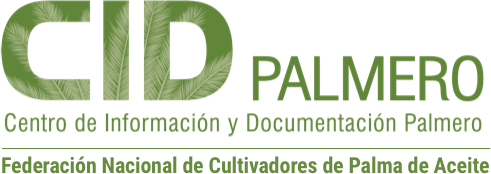Does Crop Yield Affect Labor Productivity? Evaluation Carried out in Oil Palm Plantations in the Colombian Central Zone

Disponible aquí
Disponible aquí
Disponible aquí
Disponible aquí
Disponible aquí
Disponible aquí
Disponible aquí
Disponible aquí
Disponible aquí
Disponible aquí
Disponible aquí
Disponible aquí
Disponible aquí
Disponible aquí
Disponible aquí
Disponible aquí
Author
Camperos-Reyes, Jonathan Eduardo
Mosquera-Montoya, Mauricio
Estadisticas
Publicación:
Palmas; Vol. 45 Núm. 1 (2024): Palmas; 51-66
2744-8266
Palmas; Vol. 45 Núm. 1 (2024): Palmas; 51-66
2744-8266
Abstract
In Colombia, the processes that participate the most in the cost of producing a ton of fresh fruit bunches (FFB) of oil palm are fertilization, harvesting and artificial pollination. However, the demand of labor for harvesting and for artificial pollination account for about 83 % of the total labor required for cropping OxG hybrid cultivars. Meanwhile, the harvest represents 60 % ofthe total labor demand in a crop planted with E. guineensis (which does not require artificial pollination). In other words, oil palm cultivation is a labor-intensive activity. En Colombia, los procesos de mayor participación en el costo de producir una tonelada de racimos de fruta fresca (RFF) de palma de aceite son la fertilización, la cosecha y la polinización artificial. En cuanto a la demanda de mano de obra para la cosecha y la polinización artificial, esta representa alrededor del 83 % del total de la mano de obra requerida para el cultivo de cultivares híbridos OxG. Por otro lado, la cosecha representa el 60 % de la demanda total de mano de obra en un cultivo sembrado con E. guineensis, el cual no requiere polinización artificial. En otras palabras, el cultivo de palma de aceite es una actividad intensiva en mano de obra.
In Colombia, the processes that participate the most in the cost of producing a ton of fresh fruit bunches (FFB) of oil palm are fertilization, harvesting and artificial pollination. However, the demand of labor for harvesting and for artificial pollination account for about 83 % of the total labor required for cropping OxG hybrid cultivars. Meanwhile, the harvest represents 60 % ofthe total labor demand in a crop planted with E. guineensis (which does not require artificial pollination). In other words, oil palm cultivation is a labor-intensive activity.
Palabras clave:
Palma de aceite
Costos
Productividad
Mano de obra
Tiempos y movimientos
Polinización
Palma de aceite
Costos
Productividad
Mano de obra
Tiempos y movimientos
Polinización


